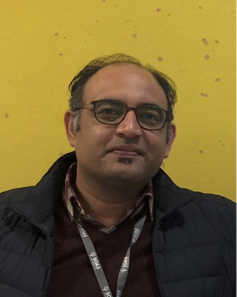A closer look at two iconic collections that go under the hammer soon.
Indian miniatures refer to intricate, highly detailed, small-format artworks that thrived across the Indian subcontinent over the centuries. This art, patronised by rulers, courtiers, and wealthy merchants, was created by highly skilled artists who were trained meticulously in their special ‘schools’ from a young age. These works have always been treated as highly valuable, much at par with gems and jewellery. This broad genre of painting spans across a variety of traditions, cultures, religions, and themes. These paintings cover a diverse range of subjects, everything from courtly events to depictions of mythological narratives and cultural practices. Preserved as illustrated manuscripts, albums, and individual folios, these jewel-like miniature paintings were brilliantly coloured with natural mineral pigments such as lapis lazuli and malachite and illuminated with gold and silver. As dynamic as the land itself, the art of miniatures has ebbed and flowed with time showcasing distinct regional nuances.
The coming week in London, two renowned collections of these miniature masterpieces will be going under the hammer. Sotheby’s prepares to present parts three and four of the sale from the estate of Stuart Cary Welch (auction on 25 October), widely regarded as the preeminent collector of Indian art. The same week, Christie’s will be showcasing the collection of Toby Falk (auction on 27 October), another esteemed academic and expert in the field of Indian art.
Both Welch and Falk were not only passionate collectors but gifted scholars and influential figures in the study of Indian and Islamic arts. Stuart Cary Welch held positions as the special consultant in charge of the Department of Islamic Art at The Metropolitan Museum of Art and curator of Islamic art at Harvard University’s Fogg Museum. He authored various publications on Persian, Mughal, Kota and Company School of paintings. Toby Falk was a prolific writer whose numerous publications continue to be authoritative texts on several areas of art historical studies. He famously catalogued the collection of the India Office Library and produced Indian Miniatures in the India Office Library in 1981.
As modern and contemporary Indian art auctions in India and abroad continue to make record breaking sales, we see a fresh interest in Indian Classical art. In recent times, the global auctions are driving this interest, with a focus on miniature paintings. Last month, Sotheby’s London auction of Freddie Mercury’s personal possessions included a Mughal Akbarnama folio that sold for £266,700 (2 crores, 69 lacs), almost 9 times its lower estimate!
Part two of Welch’s Islamic and Indian art auction took place on 6 April 2011 and established numerous sales records. Notably, an imperial Mughal painting credited to the artist Govardhan, fetched a staggering £2,953,250 (29 crores, 83 lacs) on its own! There’s another Masterpiece by Govardhan, dateable to 1635-1640 coming up in the Sotheby’s upcoming sale.

Prince Dara Shikoh with a Group of Holy Men, attributed to Govardhan, India, Mughal, circa 1635-40, estimate £250,000 – 350,000 | Courtesy Sotheby’s London
Observing current trends, if you’re contemplating an investment in Indian art, “going miniature” might just be the strategy ahead. Various schools of Indian art had their own hallmarks and specialities, and today we recognise these works, largely based on these characteristics and stylisations. Broadly, these schools include Rajput (Rajasthani and Pahari or Hill states), Mughal, Deccani, Central Indian, Company school, and several other lesser-known regional schools. We bring to you our top-picks or star-lots and hidden gems from the upcoming auctions.
Star Lots
- General Jean-François Allard with his family in Lahore
This rather special picture, although quite late in its date, is an exceptional example of European style portraiture with a crystal-clear Indian accent to it. From the expressive eyes of the children, to the finer details in their toys; from the intricate embroidered textiles to the European printed patterns; from the brilliant gold in the sky, suggesting

General Jean-François Allard with his Family in Lahore, attributed to Imam Baksh Lahori, India, Punjab, Lahore, dated 1838, estimate £100,000 – 150,000 | Courtesy: Sotheby’s London
- In Celebration of Elephants, Mewar
As Howard Hodgkin said, Elephants in Indian art are like the nude in Western art. Such has been the importance of the elephant in the Classical Indian art. This magnificent work from Mewar, features elephants in the wild in various activities and various stages of their life, not just that, but also both the African and Indian elephants coexisting. Executed in larger format for an Indian miniature, the very unusual painting showing no elements of human intervention and only the wild elephants in their natural habitat, shows clear influences from the Mughal paintings, alongside influences from Bundi and Kotah, while having been painted in Mewar.

In Celebration of Elephants, Mewar, Rajasthan, India, circa 1705-15, estimate £60,000-£80,000| Courtesy: Christie’s London
Hidden Gems
- An Astrological Figure, Bijapur
Under the reign of the eclectic Ibrahim Adil Shah II, renowned for his refined aesthetic sensibilities, Bijapur evolved into a significant hub for painting, heralding the birth of a mature artistic idiom. The poet-ruler’s fascination in mysticism and Hinduism inspired a plethora of commissioned artworks, notably of Hindu goddesses and yoginis. Ibrahim Adil Shah II held a special reverence for Saraswati, the Goddess of Knowledge, evident from the Kitab-i Nauras, a collection of spiritual songs believed to be penned by the sultan himself. It is highly plausible that this painting of a lady on a swan could be a representation of Devi Saraswati. Given that Ibrahim’s territory neighboured the influential Hindu realm of Vijayanagara, the interchange of artists, ascetics, and intellectuals fostered a blended religious ethos in the Deccan.

An Astrological Figure, Bijapur, Deccan, India, circa 1610, estimate £12,000 – £18,000 | Courtesy: Christie’s London
- Emperor Akbar’s Tomb at Sikandra
In the 19th century, detailed elevations and plans of Indian monuments were popular commissions by East India Company officials. Paintings of this theme in the 18th century are quite rare to find. The composition of this painting beautifully blends Indian spatial techniques with emerging European-inspired ones, resulting in a captivating architectural depiction that manages to be both intricate and straightforward. This piece attempts to be a plan, elevation and axonometric all in one! The artist’s objective was to give the viewer a visual journey of the entire complex in a single image, prioritizing the experience over strict realism.

Emperor Akbar’s Tomb at Sikandra, North India, probably Agra or Rajasthan, 1760-1800, estimate £30,000 – 50,000| Courtesy: Sotheby’s London
BIOS
Jayesh Mathur

Jayesh Mathur is an architect, independent scholar, and Indian art collector.
Supriya Lahoti

Supriya Lahoti is a museum professional and consultant with the Ministry of Culture.

